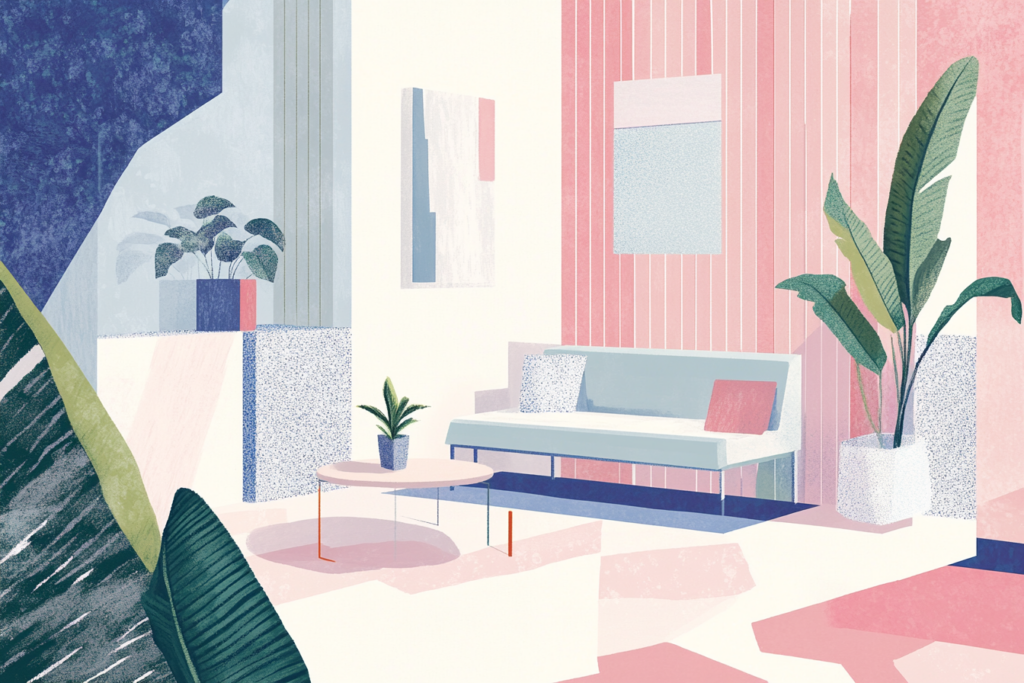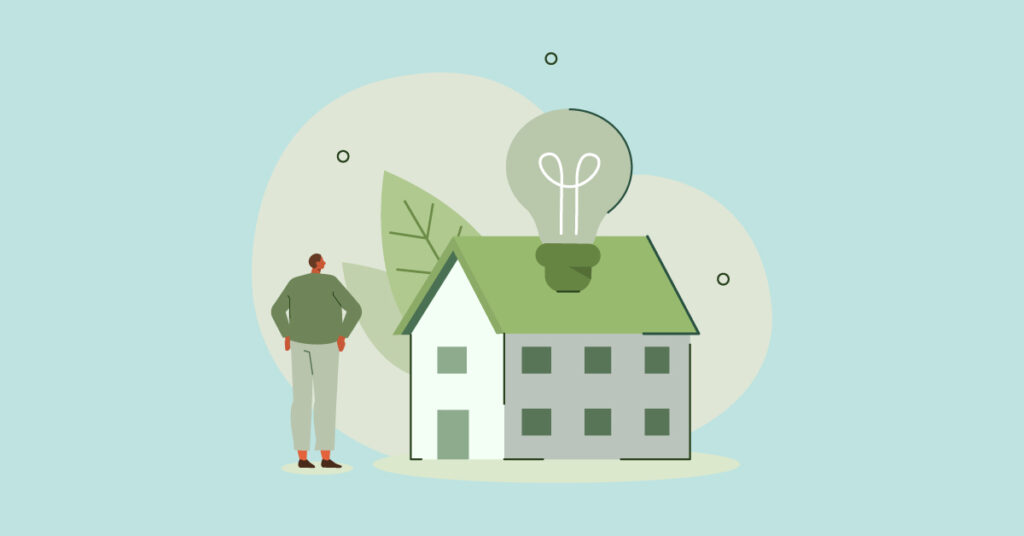Increasing the usable square footage in your home doesn’t necessarily mean you need to undertake a full renovation.
With a bit of creativity and strategic updates, you can make your existing space feel significantly larger, more functional, and better organized. Keep reading as we share some clever renovation ideas that maximize every square inch of your home, enhancing both form and function without major expansions.
1. Think Vertically
Most homes, especially those with a smaller footprint, likely have untapped vertical space that can be used to increase storage, display, and functionality. Drawing the eyes upward can transform walls into practical and visually appealing areas.
- Install Floating Shelves: In kitchens, living rooms, bathrooms, and bedrooms, floating shelves add storage space for books, decor, or essentials without taking up floor space.
- Add Built-In Cabinets: Built-ins extending to the ceiling maximize storage using wall height. These are especially useful in kitchens, where cabinets can store rarely-used items at the top, or in living rooms, where they can house books, media, and more.
- Use Tall Wardrobes and Bookcases: In bedrooms and offices, tall furniture like wardrobes and bookcases provide additional storage without requiring more floor area. Just make sure to secure taller items to walls for safety.
2. Opt for Multi-Functional Furniture
In smaller spaces, every piece of furniture matters and should serve more than one purpose. Multi-functional furniture is a great way to maximize usability and reduce clutter.
- Try a Murphy Bed or Sofa Bed: Murphy beds fold into the wall or even act as a desk or bookshelf when not in use, creating more space during the day. Sofa beds are also excellent for providing an extra sleeping area while keeping a comfortable seating area in your living room.
- Choose Ottoman Storage or Nesting Tables: Ottomans that open up for storage keep items like blankets, games, and books out of sight but accessible. Nesting tables are handy because they can be stacked together when not in use, reducing clutter.
- Look for Expandable Dining Tables: Dining tables that can be extended with an extra leaf or two or collapsed provide extra seating when needed and save space otherwise. This is especially helpful in homes where the dining area is part of an open-plan layout.
3. Optimize Closets and Storage Spaces

Closets and storage areas are often underutilized. A few tweaks can make these spaces more functional, helping you maximize storage without taking up additional room.
- Add Closet Organizers: Closet systems with rods, shelves, and drawers can dramatically increase your storage capacity. You’d be surprised how much extra space you have to store things once you optimize the space.
- Install Pull-Out Drawers in Cabinets: Kitchen and bathroom cabinets often have unused space. Installing pull-out drawers or baskets allows you to make full use of cabinet space, making it easier to organize and access items.
- Use Door Organizers: Closet and pantry doors can serve as extra storage with the addition of hooks, racks, or over-the-door organizers. Depending on the room, use these to store shoes, cleaning supplies, or pantry items.
4. Open Up Underused Spaces
Many homes have underused spaces, such as under the stairs, in entryways, or in forgotten corners. These areas can often be turned into functional nooks with a bit of planning and creativity.
- Create Under-Stair Storage or a Mini Office: The area beneath the stairs can become storage with pull-out drawers or shelves. Alternatively, you can create a cozy reading nook or a mini office with a desk and chair, adding a whole new function to your home.
- Designate Entryway Storage: Add hooks, a bench with storage, or a shoe rack to your entryway to keep coats, bags, and shoes organized. This reduces clutter in other areas of the home and provides a specific place for items you use frequently.
- Build Out Closet Nooks: Smaller closets can become functional nooks by adding shelves, dressers, or small tables, creating dedicated storage or a workspace. Closet nooks in bedrooms can serve as mini-offices, freeing up other parts of your home.
5. Focus on Light and Bright Colors
Making a space feel bigger doesn’t always require physical changes. Lighter colors and proper lighting can make any room look and feel more spacious, which enhances usability.
- Use Light Colors: Light, neutral colors on walls and floors reflect light, making rooms appear larger and more open. Whites, grays, and beiges are popular choices for creating an airy atmosphere.
- Add Mirrors Strategically: Mirrors reflect light and create the illusion of depth, making rooms feel bigger. Place mirrors opposite windows to amplify natural light or in hallways to make them feel wider.
- Layer Lighting: Use a mix of ambient, task, and accent lighting to brighten up every part of the room. Recessed lighting, wall sconces, and under-cabinet lighting are great options for creating a well-lit, inviting space.
6. Invest in Built-In Furniture
Built-in furniture can do wonders for opening up space in your home to maximize functionality without adding bulk. Although it’s a bigger upfront investment, customizable built-ins can transform small spaces.
- Built-In Desks and Shelving: A built-in desk in a small room or office saves floor space and offers a dedicated workspace. Adding shelves above the desk creates a mini home office that feels integrated with the rest of the room.
- Install Built-In Seating: Bay window seating or bench seating in dining areas eliminates the need for bulky furniture, freeing up floor space. Built-in seating can also provide storage by including drawers or compartments beneath the seat.
7. Create Zones in Open-Plan Spaces
In open-plan homes, creating defined “zones” for different activities helps increase usability by organizing the space. This strategy works well for studios, lofts, or small living-dining areas.
- Use Rugs and Furniture Arrangement: Rugs and strategic furniture placement can separate different areas. For example, a sofa can act as a divider between the living room and dining area, creating distinct spaces without walls.
- Add Dividers or Shelving Units: Open shelving units or folding screens provide separation without cutting off light or air circulation. Shelving units are especially useful because they add storage while defining space.
8. Install Pocket or Sliding Doors
Traditional doors that swing open require clearance space, which can limit layout options in small rooms. Pocket doors or sliding doors eliminate this problem by freeing up wall and floor space.
- Replace Swing Doors with Pocket Doors: Pocket doors slide into the wall, so they don’t take up extra space when open. They work well in areas like bathrooms, closets, or between rooms where space is at a premium.
- Use Sliding Barn Doors: Barn doors slide along the wall, adding character and maximizing space. They’re especially popular in homes with a rustic or industrial aesthetic, adding style as well as function.
- Try Sliding Glass Doors: In addition to saving space, glass doors let natural light flow between rooms, offering a more open and airy feel.
9. Go Minimalist with Decor
Do you ever walk into a cluttered space and instantly feel cramped? No matter how big or small your home is, you can create a clean, streamlined look that maximizes usable space by focusing on essentials.
- Choose Functional Decor: Opt for decor that doubles as storage or serves a purpose, such as a decorative basket for blankets or a wall-mount bookshelf.
- Declutter Regularly: Regularly assess your belongings and donate or discard items you no longer need. A tidy, organized home feels larger and more inviting.
- Emphasize Quality Over Quantity: Instead of filling a room with decor and furniture, choose a few quality pieces that complement the room’s function.
Conclusion
Maximizing usable space without adding square footage is about thinking strategically, making mindful choices, and working with what you already have.
These thoughtful updates enhance daily living and increase your home’s value by showcasing efficient, well-designed spaces. So whether you’re working with a small apartment or a cozy house, these ingenious upgrades can help you create a spacious, inviting home that meets all your needs.
You might also be interested in: Home Office Optimization – 11 Tips to Improve Comfort and Productivity




